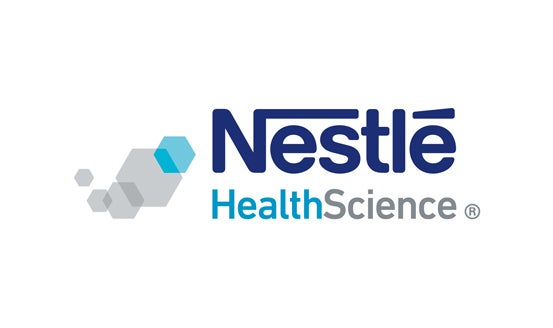
Resource® ThickenUp® Clear Shown to Reduce Aspiration Risk for Dysphagia Patients
Nestlé Health Science Introduces Next Generation Food and Liquid Thickener to Improve Swallowing Safety Compared to Thin Liquids
Florham Park, New Jersey, June 11, 2012 – Nestlé Health Science today announced the availability of Resource® ThickenUp® Clear, an innovative, non-starch-based thickening powder. This product is designed to decrease the risk of aspiration compared to thin liquids for people with dysphagia – a serious condition affecting nearly 25 million people in the U.S.1,2 Designed to address the challenges of some existing starch-based thickeners, Resource® ThickenUp® Clear is tasteless, mixes and dissolves easily and remains clear when mixed with water.
Some people affected by dysphagia (swallowing difficulties) may require the texture of liquids and foods to be modified with a thickening product in order to help them swallow more safely. Thickening products are designed to assist patients with swallowing function by helping to keep foods and liquids from entering the lungs.
A recent study conducted by Rebecca J. Leonard, Ph.D., showed a significant reduction in the incidence of penetration and aspiration in dysphagia patients who consumed Resource® ThickenUp® Clear, made with xanthan gum, compared to thin liquid. Improvement in airway closure time was observed for gum-thickened barium compared to thin liquid barium, demonstrating the ability of this new gum-based thickener to enhance dysphagia patient
safety.1
If unmanaged, dysphagia can have severe health consequences including malnutrition, dehydration and aspiration pneumonia which is associated with increased mortality.3 Up to 89 percent of patients with aspiration pneumonia, a major cause of morbidity and mortality among hospitalized elderly, have dysphagia.4,5 Undiagnosed dysphagia resulting in aspiration pneumonia can cost medical institutions an estimated $4,300 per day, per patient.6
“We’re thrilled to introduce a new solution to modify food and beverage consistency that is meaningful for both the dysphagia patient and the hospital,” stated Dr. Juan Ochoa, U.S. medical and scientific director, Nestlé Health Science. “Resource® ThickenUp® Clear offers a clear, consistent and easy-to-use option to help people manage their swallowing difficulties.”
Nestlé Health Science recommends systematic screening to identify individuals at risk of dysphagia and help improve outcomes by implementing the validated dysphagia screening tool EAT-10 as a standard of care. Patients identified at risk for dysphagia should then be referred to a speech language pathologist for further evaluation, dietary modifications and treatment, as needed. To assist clinicians in the diagnosis and management of dysphagia patients Nestlé Health Science has developed a variety of resources and products.
Swallowing Assessment Tool (EAT-10)
This validated swallowing assessment tool was developed by a multidisciplinary team of experts and is available through the Nestlé Nutrition Institute. This screening questionnaire is a symptom-specific 10-question survey that is recommended for use to identify patients at risk of dysphagia. The tool does not address treatment, as the objective is merely to identify those at risk so clinicians can further evaluate patients and intervene early, as needed, with a tailored therapy and treatment plan.
# # #
About Dysphagia
Dysphagia affects nearly 25 million people. While dysphagia is a condition that can affect individuals at any age, it is most common in adults 65 years and older and individuals diagnosed with head and neck cancers, stroke, brain trauma, cerebral palsy, Parkinson’s, Alzheimer’s and Huntington’s disease.7,8
About Dysphagia Product Portfolio and Resource® ThickenUp® Clear
Nestlé Health Science offers a diverse portfolio of Resource® Thickened Products to optimize hydration opportunities including beverages and shakes. Resource® ThickenUp® Clear is a clear, consistent, and easy-to-use thickening agent made with xanthan gum to provide swallowing support for people with dysphagia. For additional information, including full nutritional information, visit www.thickenupclear.com.
About Nestlé Health Science
Nestlé Health Science offers nutritional solutions for people with specific dietary needs related to illnesses, disease states or the special challenges of different life stages. Nestlé Health Science, a wholly owned subsidiary of Nestlé S.A., became operational on January 1, 2011 and has worldwide headquarters in Lutry, Switzerland. For more information, visit www.nestlehealthscience.us.
References:
1 Leonard R et al. The effects of rheology and type of thickening agent on objective swallowing parameters. Poster presentation at the 1st Congress of the European Society for Swallowing Disorders. Leiden. The Netherlands. Sept. 9-10, 2011.
2. United Nations, Department of Economic and Social Affairs. World population prospects, the 2010 revision. http://esa.un.org/unpd/wpp/Excel-Data/DB02_Stock_Indicators/WPP2010_DB2_F01_TOTAL_POPULATION_BOTH_SEXES.XLS. Updated October 31, 2011. Accessed November 21, 2011.
3. Clave et al. Accuracy of the volume-viscosity swallow test for clinical screening of oropharyngeal dysphagia and aspiration. Clin Nutr. 2008; 27(6):806-15.
4. Langmore SE et al. Predictors of aspiration pneumonia: how important is dysphagia? Dysphagia. 1998;13:69-81.
5. Martin BJ et al. The association of swallowing dysfunction and aspiration pneumonia. Dysphagia. 1994;9:1-6.
6. Estimated patient cost per day is derived from average hospital costs associated with pneumonia from the 2008 HCUP database. Nestlé Healthcare Nutrition. Data on file.
7 U.S. National Library of Medicine, National Institutes for Health. Swallowing disorders. http://www.nlm.nih.gov/medlineplus/swallowingdisorders.html. Accessed February 13, 2012.
8. Smith Hammond CA, Goldstein LB. Cough and aspiration of food and liquids due to oral-pharyngeal dysphagia: ACCP evidence-based clinical practice guidelines. Chest. 2006 Jan;129(1 Suppl):154S-68S.
- Press Release
